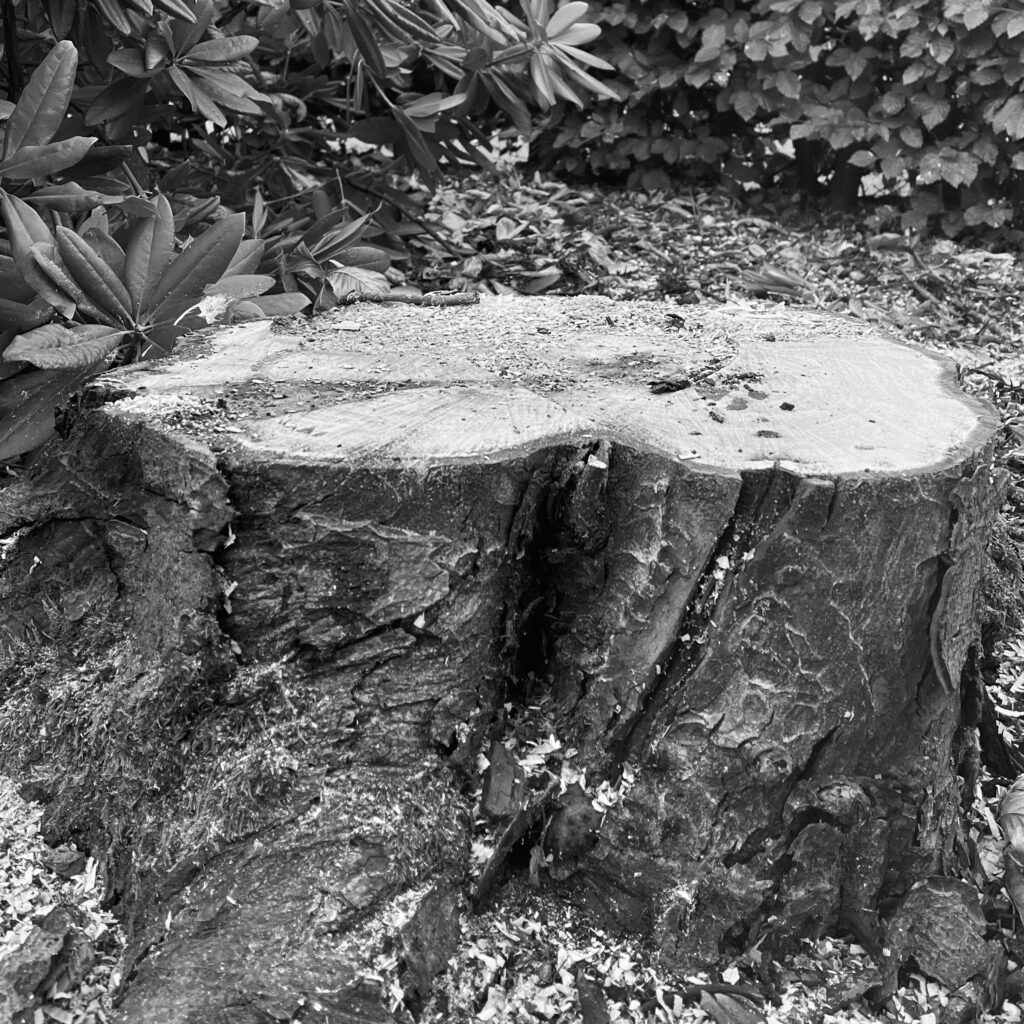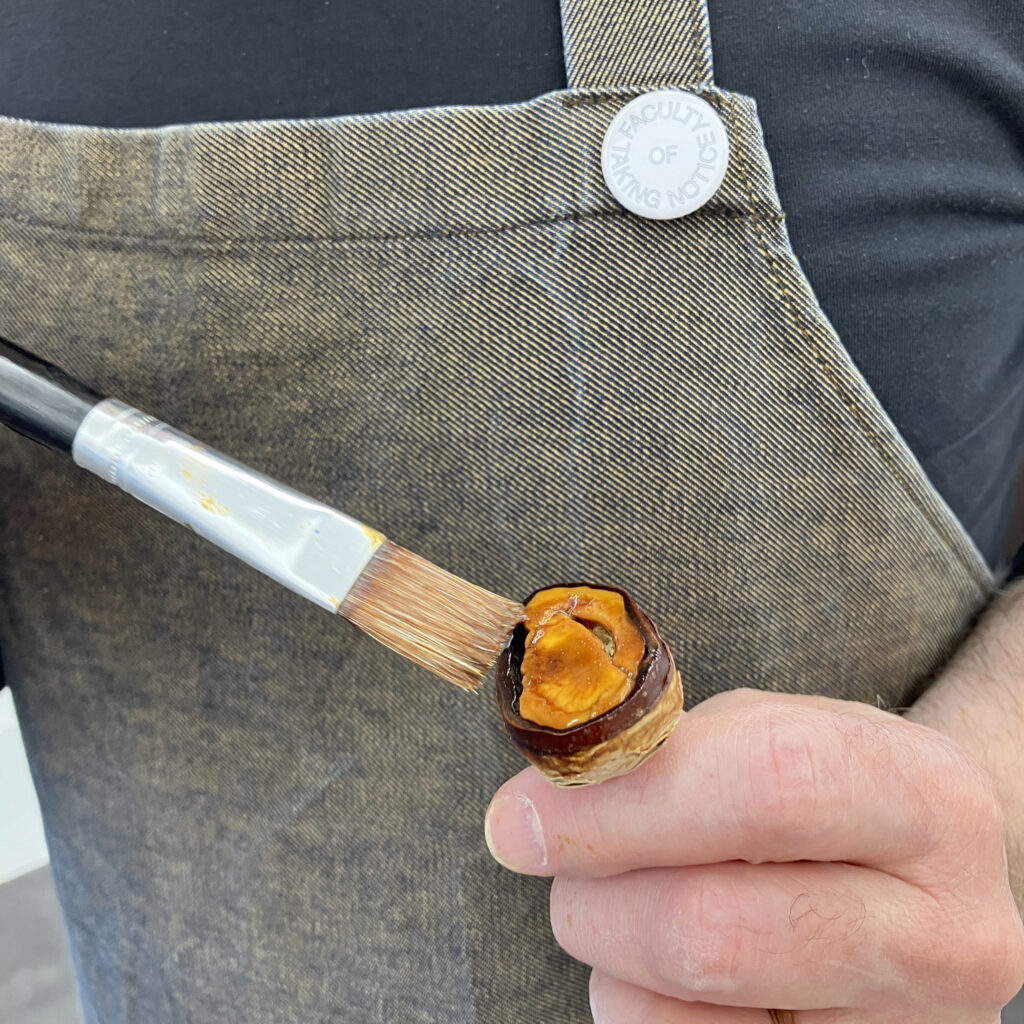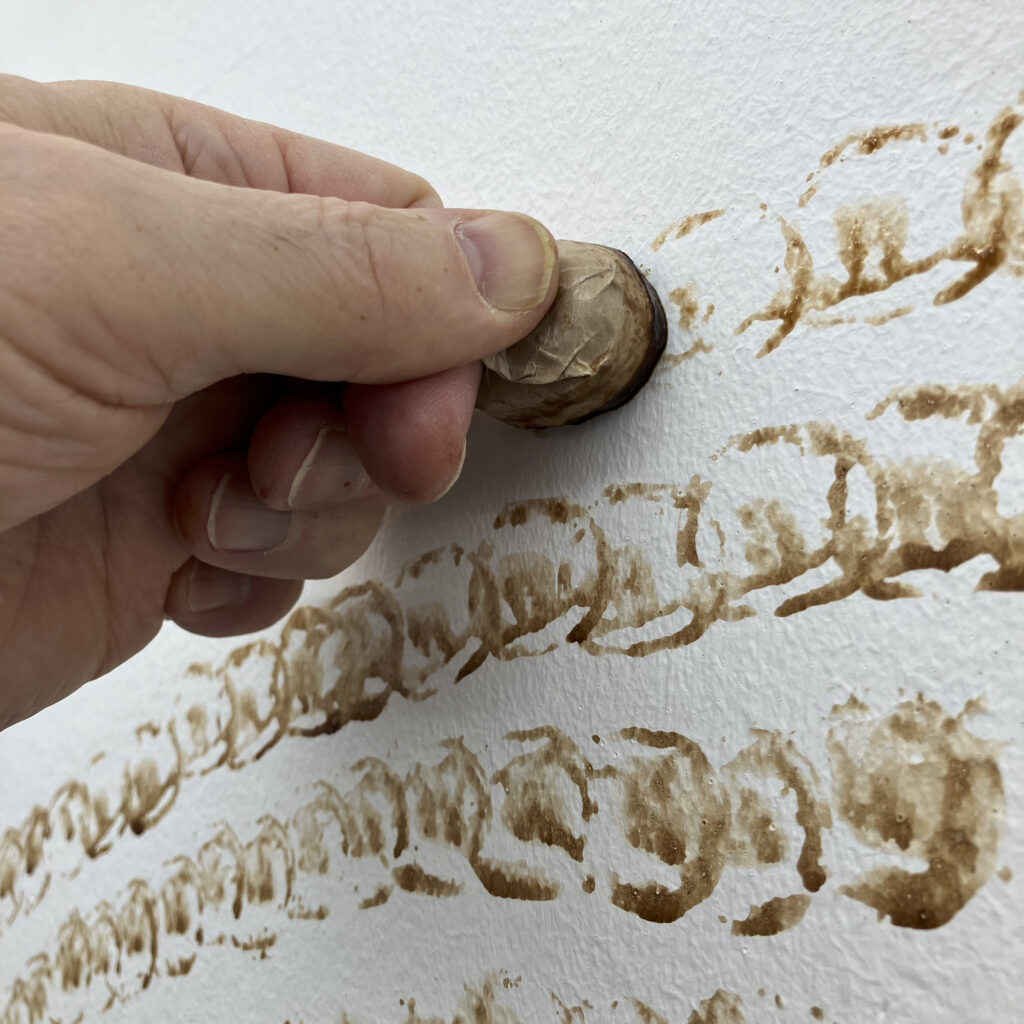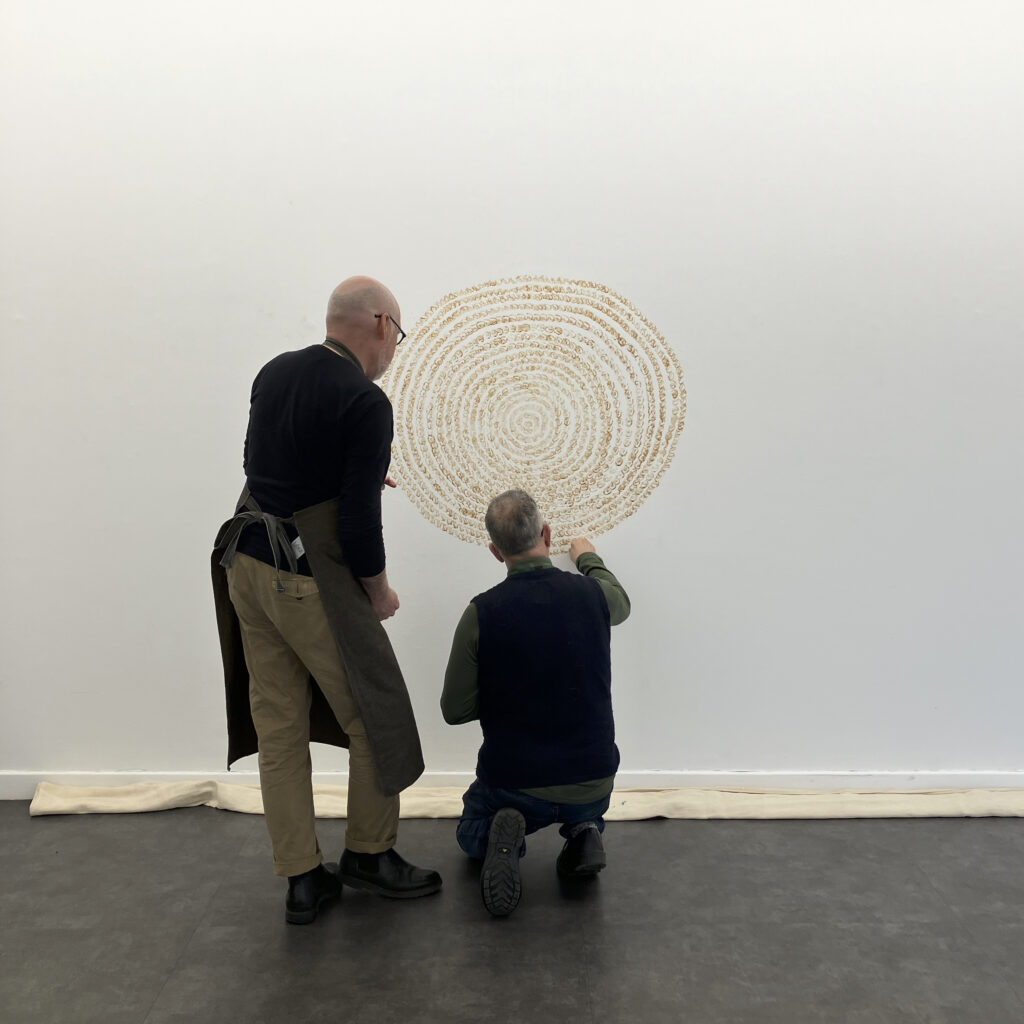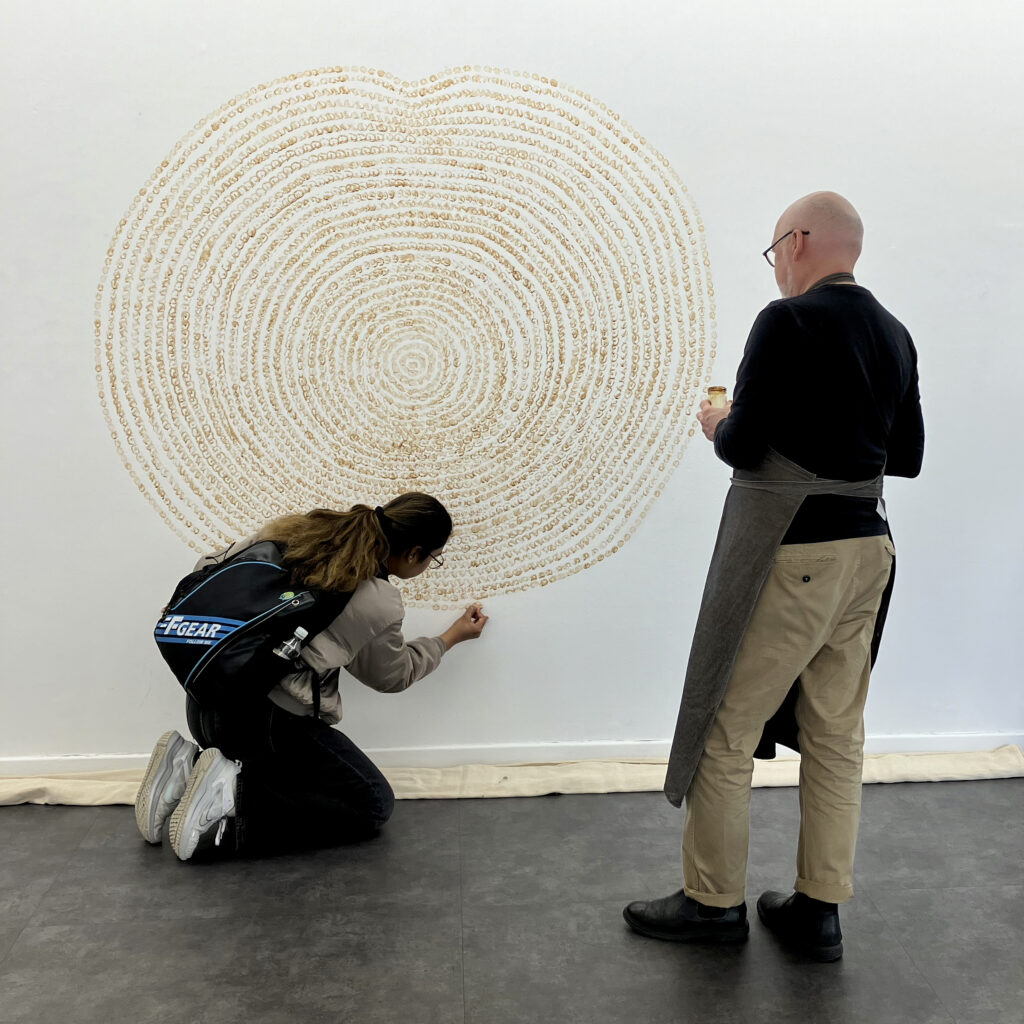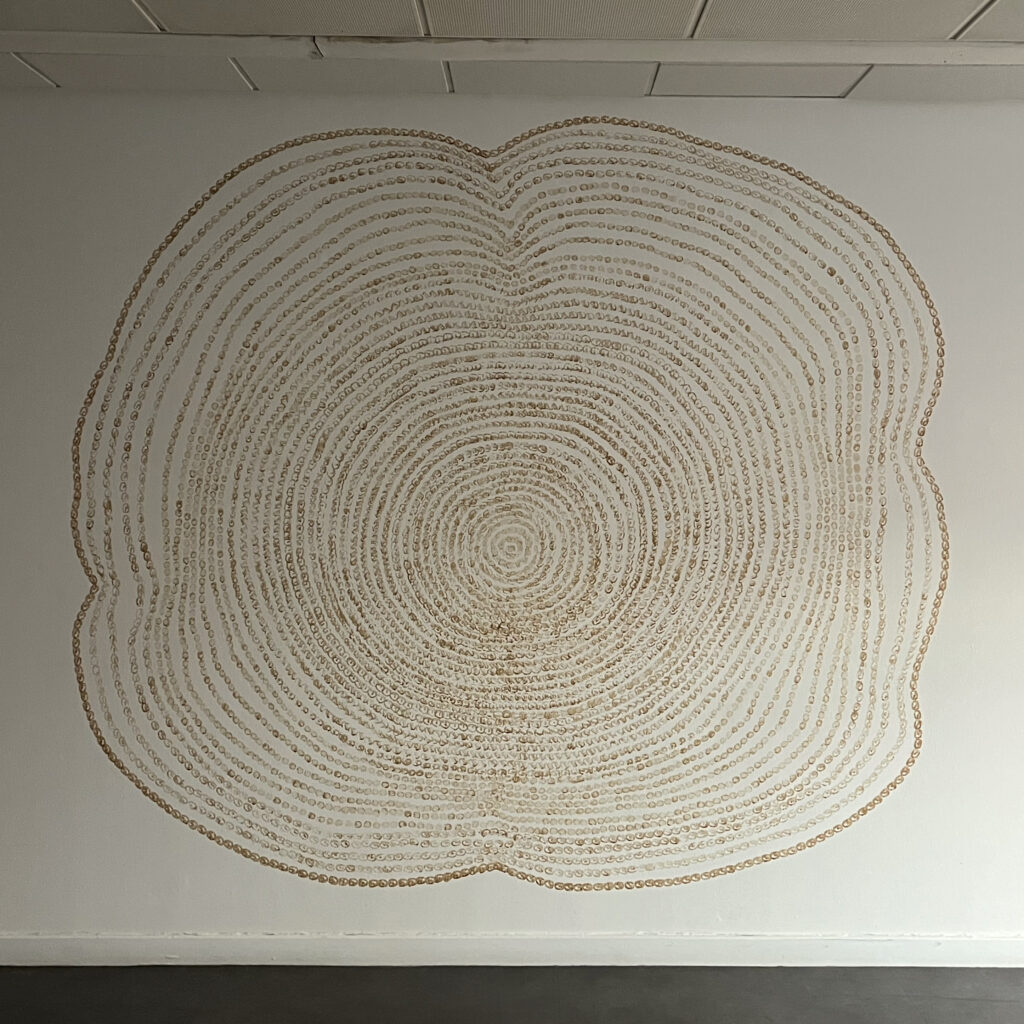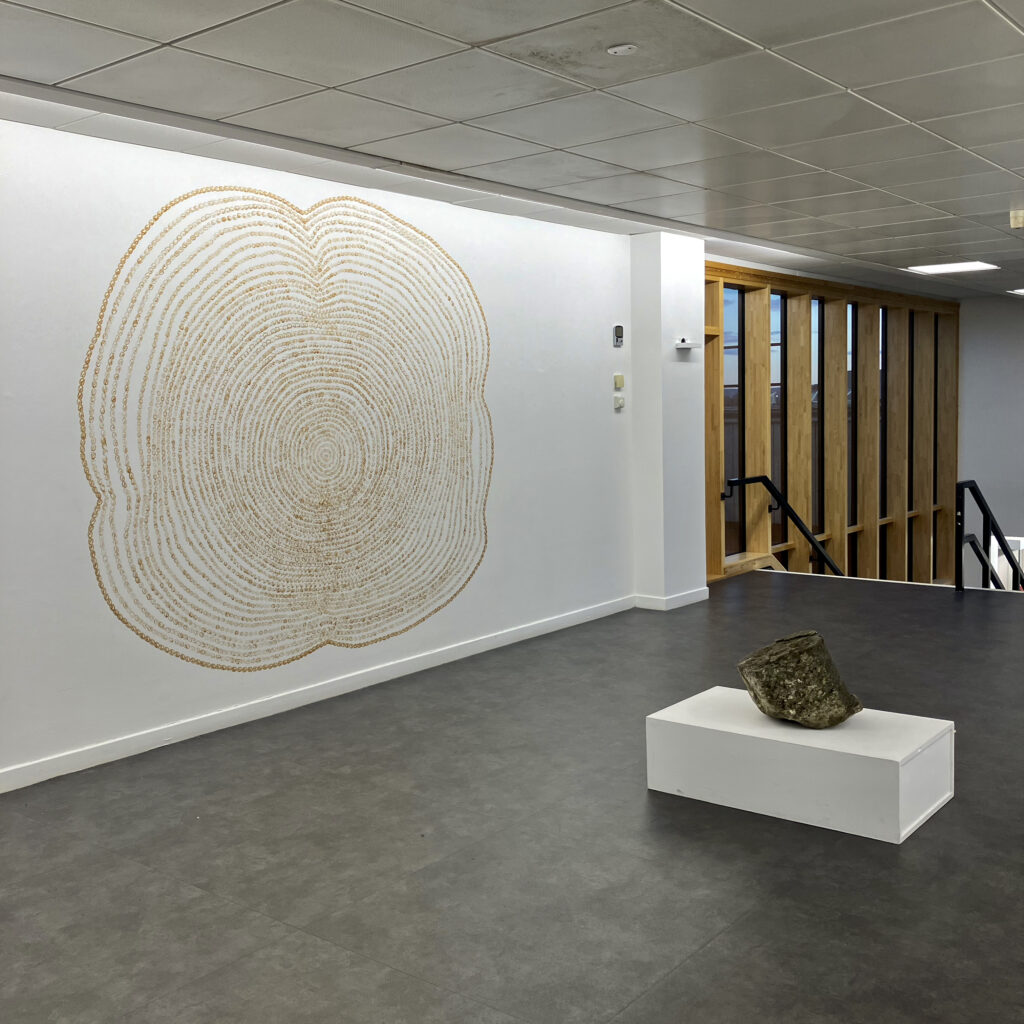Early in the autumn semester, the ‘Faculty of Taking Notice’ noticed that a horse chestnut tree, sited near the entrance to the Pathfoot Building, had been felled.
We had walked past the tree in the morning, observing that the chestnuts were ripening and the leaves were beginning to turn. Returning later in the afternoon, seeing a newly revealed expanse of sky and an open view across campus to the Wallace Monument, we realised that the tree had gone.
We began to wonder how much the presence of this tree had been appreciated before it had been felled or was it noticed only in retrospect, once it was no longer there? Was our sense of loss in response to the felling of this particular tree shared by others? As an act of taking notice, we gathered up the fallen chestnuts in their spiky husks, salvaging all that remained of the tree, and over several months, let them slowly open and dry out in our Glasgow studio.
At the beginning of March, through a process of double boiling, sieving and filtering, the husks produced a richly coloured, natural chestnut ink. Some of the conkers we had saved from the tree were halved and carefully shaped to form printing stamps. The ink from the husks and the conkers became our media for the installation, ‘Where once there stood a tree’.
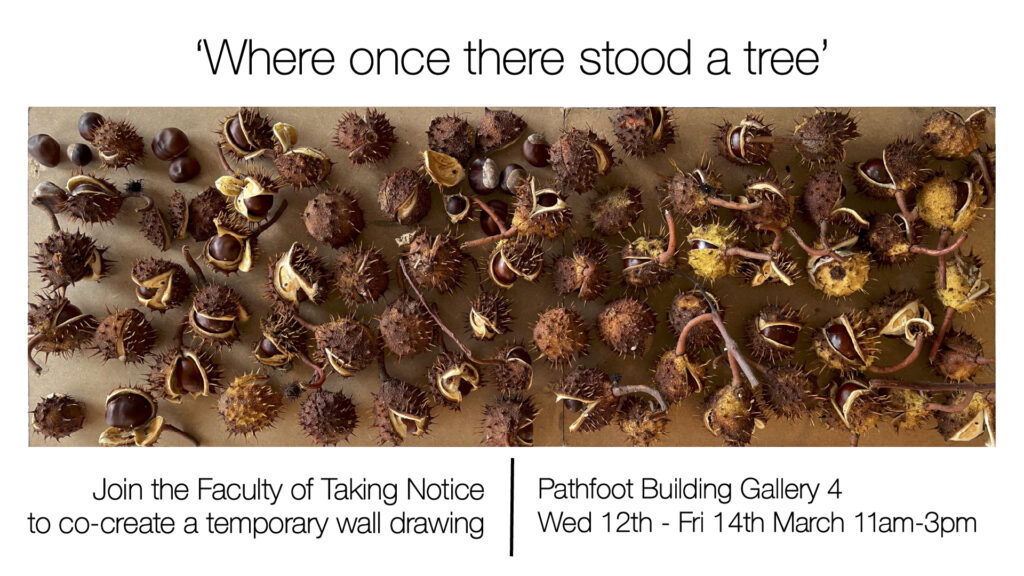
Aerial photographs held in the University Archive suggested that this horse chestnut tree had self-seeded in the late 1970’s/early 1980’s. The pattern of the growth rings and profile of the stump, indicated that as it grew, it had been weakened by disease that made it vulnerable to high winds.
We documented the tree stump through photographs and sketches. Then, over three days, working alongside students and staff, we co-created the large-scale, temporary, hand-printed wall drawing. Sited on a gallery wall in the Pathfoot Building, ‘Where once there stood a tree’ was a re-imagining of the tree and the unique pattern of its rings.
Two of us worked on the wall at the same time, one printed and the other had the task of inking the conker stamp. The inker stood slightly to the side of the person printing, a jar of ink in one hand and a brush in the other. A rhythm developed, the inker soaking up just enough ink on the brush, painting the ink onto the conker and checking that a wee reservoir of ink had not formed in one of the tiny folds on the surface of the kernel.
We pressed the conker stamp to the wall, carefully making a single mark, then round it printed the first ring, steadying our hands with fingers resting lightly on the wall, keeping the force perpendicular to the wall, so as not to slip. When the stamp touched the wall, it had to be rocked slightly to ensure the whole mark was made. Every person who printed had their own individual style. One visitor moved like a dancer; pressing, pressing again and again, then bending their arm outwards, turning their hand so that the face of the conker could be inked, then turning back to the wall, hardly shifting their feet… Some hesitated with each impression to check the ink was not running and all was well; while others paused, conker stamp in hand, sharing their stories of trees loved and lost.
Over these three days, the slow, repetitive action of mark making accumulated, stamp after stamp, ring after concentric ring, radiating out from the centre of the wall, upward to ceiling and downward to skirting board. The completed 2.3m x 2.6m wall drawing was always intended to be a temporary piece and was exhibited for nine days in Gallery 4 of the Pathfoot Building.
‘Where once there stood a tree’ was a celebration of and a temporary memorial for a horse chestnut, which had offered shade on campus for over forty years…
